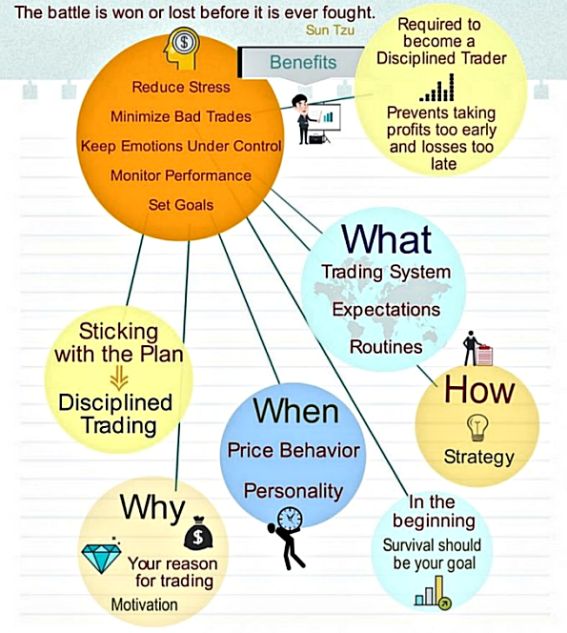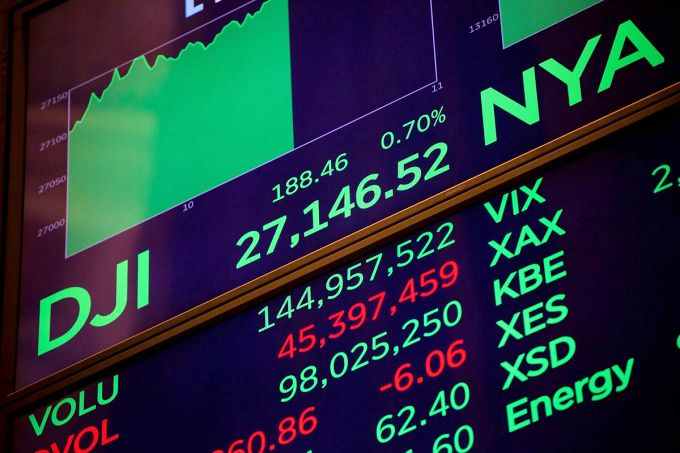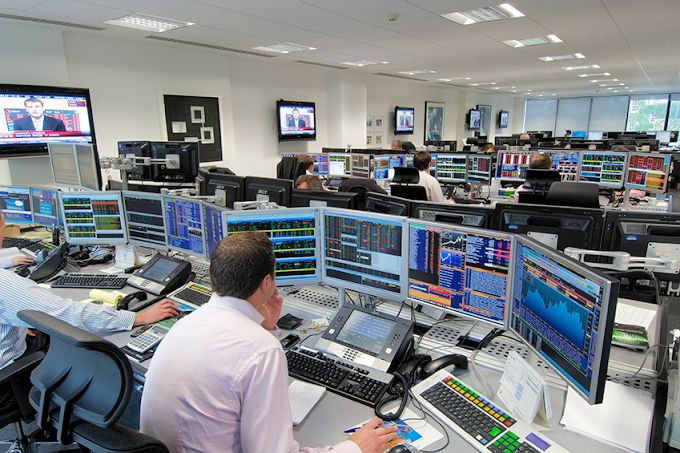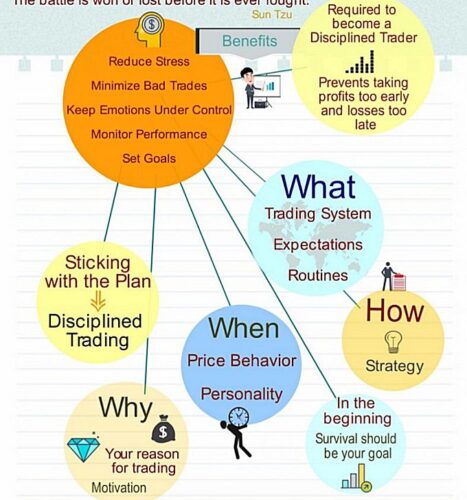
Best trading practices, some good advice and tips to create you own trading plan in order to trade well and in a profitable way, without losing money.
It pays to write down your plan. You need to know exactly under what conditions you will enter and exit a trade. Do not make decisions on the spur of the moment, when you are vulnerable to being sucked into the crowd. Plans are created by reasoning individuals. Impulsive trades are made by sweaty group members.
Alexander Elder
Here is a summary of what we consider to be essential for a good trading plan:
1) The Executive Summary. This is usually the last section written. It reviews all of the material of the plan and presents it in summary form. It should describe in detail the objective of the plan and then briefly describe, without a lot of detail, how the objectives will be achieved.
2) A Business Description. The business description should include the mission of the business, an overview of the business and its history, the products and services you provide (which is growth of capital and risk control as a trader), your operations, operational considerations such as equipment needed and site location, and your organization and management of employees (if any). All of these topics are fairly self-explanatory, but you should take the time to write them out as part of your plan.
3) An Industry Overview and Competition. In the industry overview you need to look at the factors influencing the market. For example, Ed Yardeni in his web site lists ten major factors influencing the market. These include a globally competitive economy, a revolution in innovation, wireless access to the Internet, low tech companies having access to high tech tools and changing their businesses as a result, the need to outsource to increase productivity, and many other themes. See www.yardeni.com for more information. In addition, you also need to know who/what your competition is. Who are you trading against? What are their beliefs? What advantages do they have that you don’t? What advantages do you have that they don’t?
4) Self-Knowledge Section: You need to know your strengths and your weaknesses and list them in this section. You need to know how to capitalize on your strengths and avoid (or overcome) your weaknesses.
5) Your Trading Plan Itself. The tactical trading plan should be a part of your trading plan, but it should also include (a) your trading beliefs that form the basis of your plan, (b) any strategic alliances you may have, and (c) what you plan to do in terms of education and coaching.
6) Your Trading Edges: I believe your trading plan should also include a listing of all of the trading edges that you have in the market. When you list your edges, you can review them often and be sure that you capitalize upon them. For example, your edges might include a) the fact that you don’t have to trade, b) your understanding of R-multiples and position sizing (which give people a huge edge over those who have no idea about these concepts), c) your ability to read a level II screen to get excellent stock trades, d) your sources of information, e) your ability to plan well in advance so that you have a game plan each day, f) your skill in following the ten tasks of trading, g) your knowledge of yourself and your strengths and weaknesses. This is just a sample of the possible edges that you might have over the average trader/investor.

7) Financial Information. This section should include three parts. The first part is your budget. How much money do you have? What will the trading process cost you? The second part will be your cash flow statement. Does your plan make sense in terms of cash flow? And finally, the third part will include profit and loss statements. If you have no trading record, you need to make estimates based on historical testing and based on paper trading.
8) Worst Case Contingency Planning. Things always happen that you have not accounted for or planned for in your trading plan. How will you deal with these elements? What will you do if any of these things come up? How will you make decisions when these elements come up?
Van K. Tharp, Ph.D.
Risk Below 5% of Equity Per Trade
I intend to risk below 5% on a trade, allowing for poor executions. Occasionally I have taken losses
above that amount when major news caused a thin market to jump through my stops.
Risk no more than you can afford to lose, and also risk enough so that a win is meaningful. If there is no such amount, don’t play.
Speculate with less than 10% of your liquid net worth. Risk less than 1% of your speculative account on a trade. This tends to keep the fluctuations in the trading account small, relative to net worth. This is essential as large fluctuations can engage Fred and lead to feeling-justifying drama.
Betting more boldly produces more volatility. Good traders are familiar with both and keep their trading well within their tolerances.
I use a rule of thumb that you place less than 10% of your liquid net worth at risk and that you stop your losses at 50% of that – so you have net exposure of 5% of your liquid net worth. If you have a net worth of 1.5 million, you might have liquid net worth (cash, stocks, bonds, etc) of, say, about 500,000 (a wild guess). Then you might place $50,000 of that at risk and cut your loss if you lose $25,000.
The idea is to keep the venture below your threshold of financial importance, so nominal ups and downs do not trigger your emotional uncle point and motivate you to abandon the venture during drawdowns.
ED Sykota
7 dirty words of trading.
Be careful how you use the following words and phrases as they become road blocks or worse take you down the wrong path.
Should- Phrases include: “The market should have” and “I should have”. Those phrases are often used to socialize losses. They are a strong signal something is off. They should be used to aid you in correcting your vision not make you feel better.

Must- Phrases include: “The market must…”, “I must make money”, or “I must trade”. The market does not have to do anything and either do you. When you use the word “must” it is hardly ever from a position of strength. The market knows when you are desperate and will take full advantage of you. Keeping your expenses as low as possible will make it easier to not make those statements.
Will- Phrases include: “The market will..” and “I will make money”. Once again the market does not like to be told what to do. It is the bratty kid screaming at the tops of his lungs. The word “will” relaxes your mind, similar to “should”, people use it to be lazy instead of a black background in an otherwise light picture. You can do everything right and still lose money. That is why trading is so effective at diminishing confidence. In most every activity, if you do everything right you are going to get the desired result. Doing the “right” things is bare minimum. Of course, over time you will get paid for doing the right things but it is never when you think it should be and hardly how much you anticipated.
Won’t- Phrases include: “The market won’t…” or “I won’t make money”. Notice a theme here? You are part of the market, you are not the market. Not getting what you expect, even if it is positive, confuses the brain. If you expect to lose and don’t it is still a bad outcome. The market is a one way walkie talkie, you listen, it talks.
Can’t- Phrases include: “The market can’t..” or “I can’t…” or “I can’t lose anymore”. Yes the market can, go look at a chart. Go look at a Fed day or about any chart from 2008. Not only can it happen, it does happen. There are no more once in a lifetime moves in the market. There are and always have been life changing moves. No one ever said trading was easy but at least in the case of futures someone is taking your money. If you think you can’t, you probably wont. The market will take every penny you have. If can take every penny you put at risk. Fix the problem, when you run out of money it is too late.
Impossible – Phrase includes: “It is impossible to make money”. Once again someone, somewhere is making money. It may not end up being an efficient use of your time or capital but it is possible. You are substituting an excuse for execution.
Sense – Phrase includes: “The market does not make sense”. Many fortunes are made in an illogical market. Logic is a bigger driver than risk controls for most people. It is easier to ignore your P/L when you can see or touch the catalysis. For example, it is cold buy natural gas. By the time you change your view or are forced to change, the market flips. Logic will eventually prevail, with or without you.
Eli Radke
“Buffett, already an extraordinarily successful investor, came to Berkshire uniquely prepared for allocating capital. Most CEOs are limited by prior experience to investment opportunities within their own industry – they are hedgehogs. Buffett, in contrast, by virtue of his prior experience evaluating investments in a wide variety of securities and industries, was a classic fox and had the advantage of choosing from a much wider menu of allocation options, including the purchase of private companies and publicly traded stocks… Buffett does not spend significant time on traditional due diligence and arrives at deals with extraordinary speed, often within a few days of first contact. He never visits operating facilities and rarely meets with management before deciding on an acquisition.”

– excerpt from “The Outsiders: Eight Unconventional CEOs,” via Seeking Wisdom
As the saying goes, the fox knows many things while the hedgehog knows one thing. The hedgehog trait is typically emphasized as superior – the ability to stick to one’s knitting, stay focused, and otherwise not be distracted.
So I was surprised to see great CEOs and capital allocators (like Buffett) classified as foxes rather than hedgehogs. But on reflection it makes perfect sense. The best CEOs – and the best traders in our opinion – are “patient foxes:” They possess the ability to see many things, but the patience to only do a few things. This is a rare combination of traits in a single individual. Usually you find one (wide-ranging opportunity awareness) or the other (ample patience), but not an intertwining of both.
Poker is instructive here too. In the poker room you will find many “hyperactive foxes” – players with all kinds of angles and moves, constantly put in play – and stone-cold “rocks,” i.e. guys with dust on their chips who only play super-premium hands.
Both of these extremes have deep embedded weaknesses. The hyperactive fox burns up his chips on rake, tokes, excessive volatility, and dubious EV slippage as a result of chasing too many marginal opportunities. The rock, meanwhile, fails to exploit a wide enough array of opportunities to justify the seat. (The conventional rock strategy is always long-run unprofitable, by the way — it doesn’t cover the vig.) The “patient fox,” though, has the ability to wait – demonstrating vigilant inaction – while acting skillfully and forcefully in the right windows.
Are you a “patient fox” in your trading? How about in your business if you run one, or career if you have one? Would working to become more so improve your results?
JS
Best Practices in Trading: Developing a Framework for Good Trading
Too many traders justify poor trading and overtrading by appealing to “intuition”. There’s no question that intuition and implicit learning are cornerstones of pattern recognition. That doesn’t mean, however, that any trade one feels like putting on is a good trade! Intuition is the result of extensive exposure to a field. Without prolonged immersion and study, there is no building of pattern recognition skills.
An effective way of ensuring that your trading truly represents sound trading is to construct a framework for your good trades that captures their essential elements. Today’s best practice comes from reader Awais Bokhari, the co-founder and CEO of the OpenTrader training program and the eminiplayer trading site. Awais has been involved in training over 1000 traders, so he has worthwhile insights into the building of trading skills. He describes the trading framework he employs to aid execution and screen for valid trade ideas:

“After working with numerous traders, one common challenge I’ve noticed is that even after they have developed a solid understanding of the market and its mechanics, they still struggle with trade execution, and can’t objectively determine the quality of a trade setup in real time. So, even after they’ve developed a good trade plan, they’re unable to execute that plan in real time.
To improve execution, I provide our students with an Execution Framework and teach them The Anatomy of a Valid Trade Idea. The concept here is to break down the trading methodology/strategy and determine the common components that are at the base of every good setup. We then track those components in a trade journal/spreadsheet with simple Yes/No values. It’s important that we’re able to measure and track each component objectively. This means we can’t include or track anything that relies on intuition.
For our discretionary trading methodology, we follow four key components that make up a valid trade idea:
1. Good Trade Location: For a majority of trade setups, trade location is going to be important. In many situations, trade location alone can be enough of a reason to enter a trade. To make this an objective determination, you simply answer whether you took the trade at a predetermined support/resistance zone.
2. Intraday Control/Bias (short term directional bias): We can assess which side is in control on the day time frame by seeing where the market is trading in relation to the first hour high/low, midpoint, VWAP, VPOC (volume point of control), overnight high/low, and previous day’s high/low. Trades in the direction of the intraday control have a higher probability of reaching their profit targets. When entering a trade that is counter to the intraday control, you should be more conservative with your trade location.
3. Momentum: We gauge momentum by monitoring the NYSE TICK in conjunction with price action. Trades in the direction of momentum have a higher probability of reaching their profit targets. When entering a trade that is counter to momentum, you should generally be more conservative with your trade location.
4. Larger Time Frame Control/Bias (trend): For the purpose of day trading, we assess the larger time frame control based on the 30-minute and daily charts. Trades in the direction of the larger time frame have a higher probability of reaching their profit targets. And, again, trades that are counter to the larger time frame/trend should usually be taken at more conservative trade location.
Confluence: These four key components make up a valid trade idea. The more of these you stack in your favor, the higher the odds of the setup working out. As a rule, at least two of these components should be in your favor on every trade.
Reward-to-Risk: R/R is used as a filter and is a prerequisite to entering any trade. Because R/R is subjective and every single trade must meet our minimum R/R criterion of 2:1, R/R can never be used as the only reason to enter a trade. It is necessary, but not sufficient on its own.
We’ve found that this execution framework allows our traders to be more objective and quickly determine the quality of a trade setup in real time. Another benefit is that it allows the trader to objective assess trades at the the end of the day.”
Brett Steenbarger
To find out more about trading and finance you can also read:
Jesse Livermore trading lessons
The true words of Jesse Livermore



